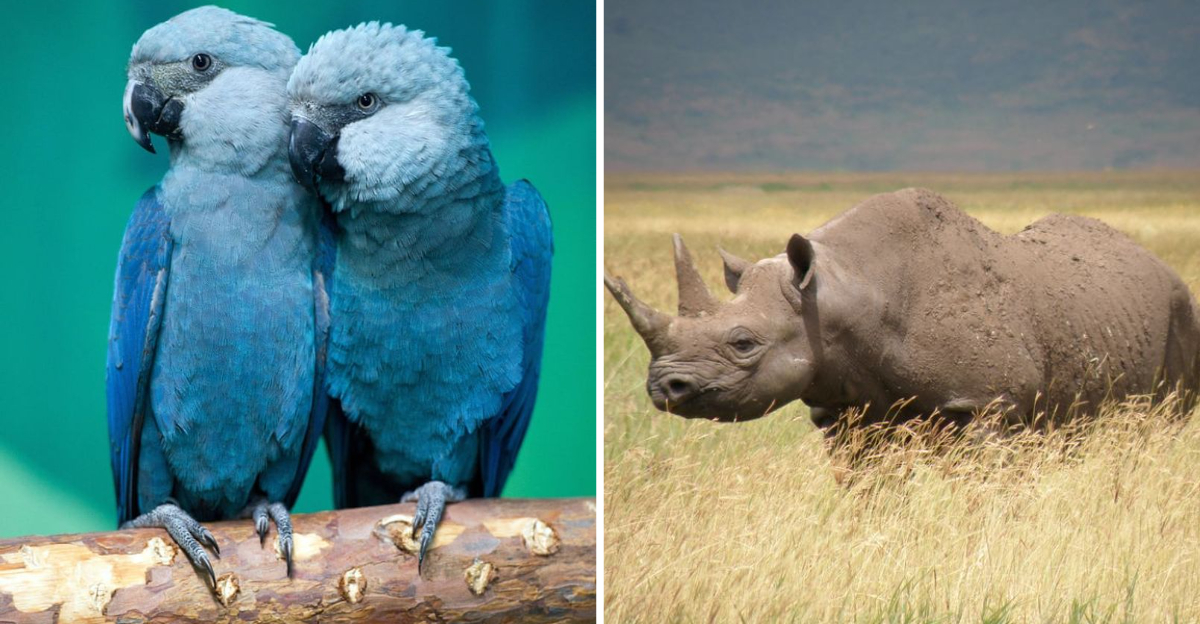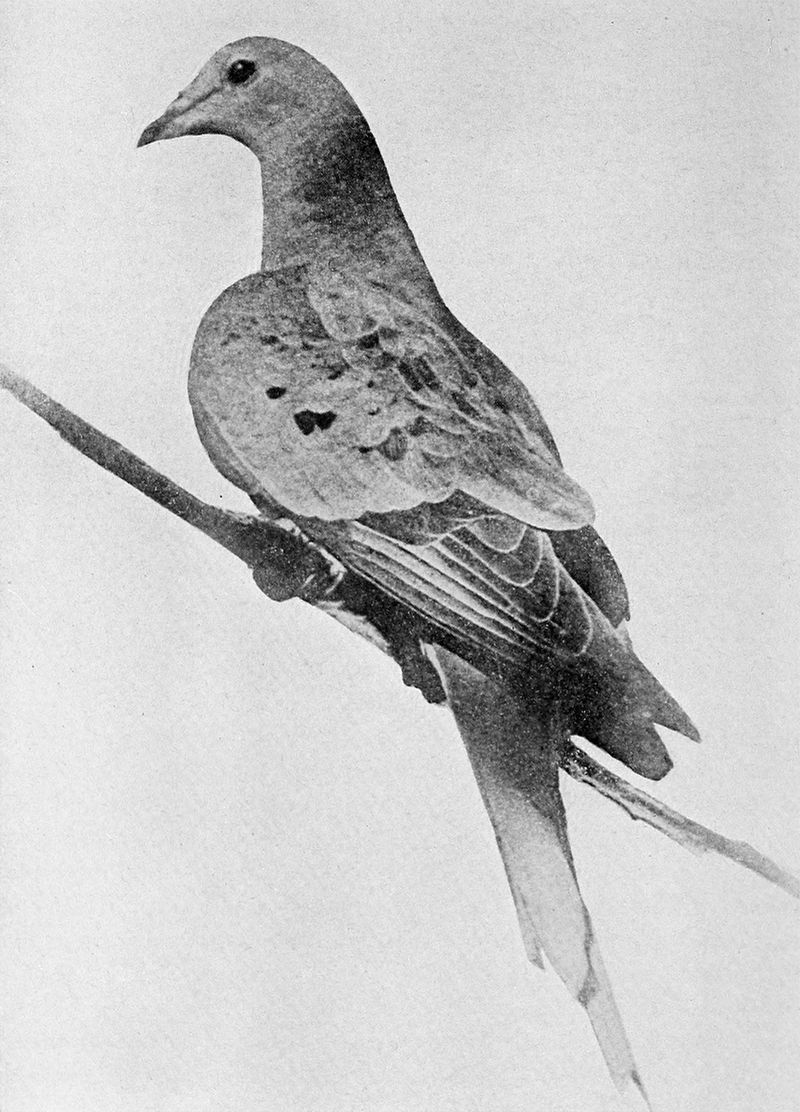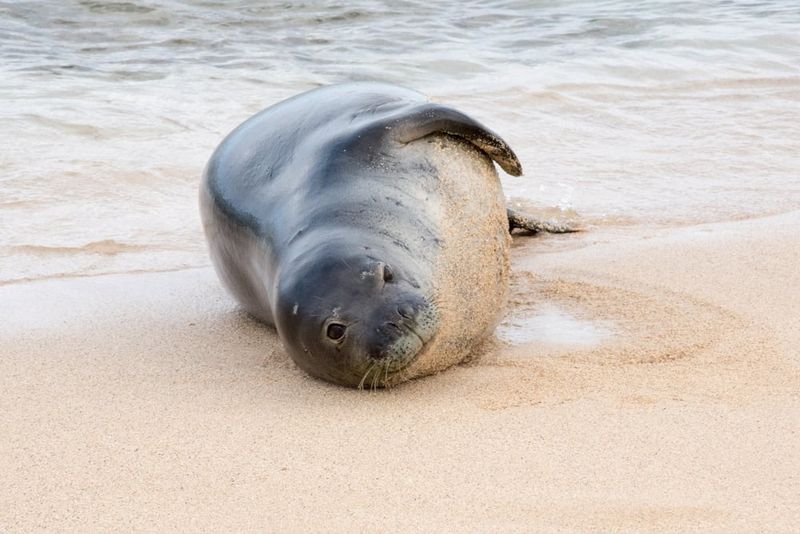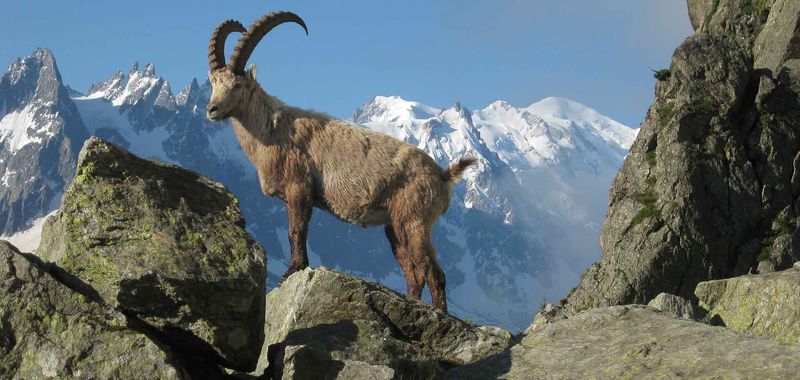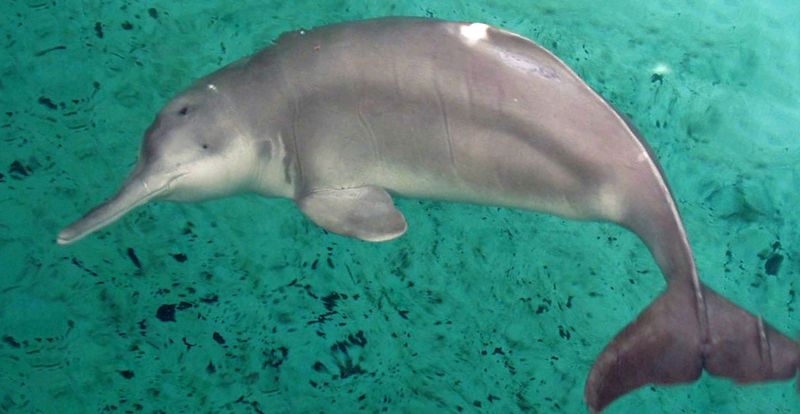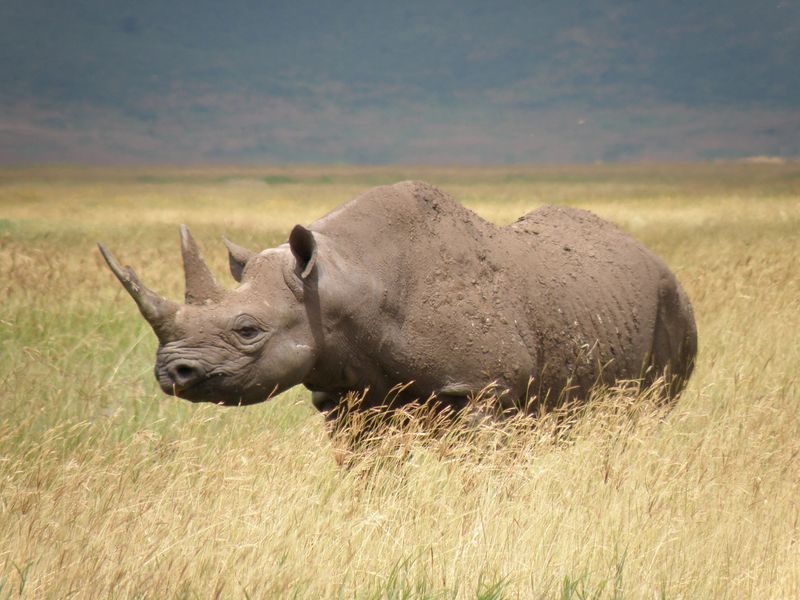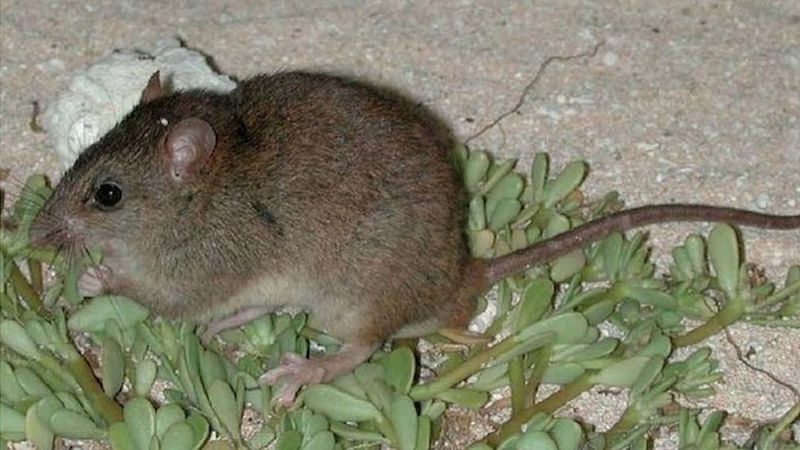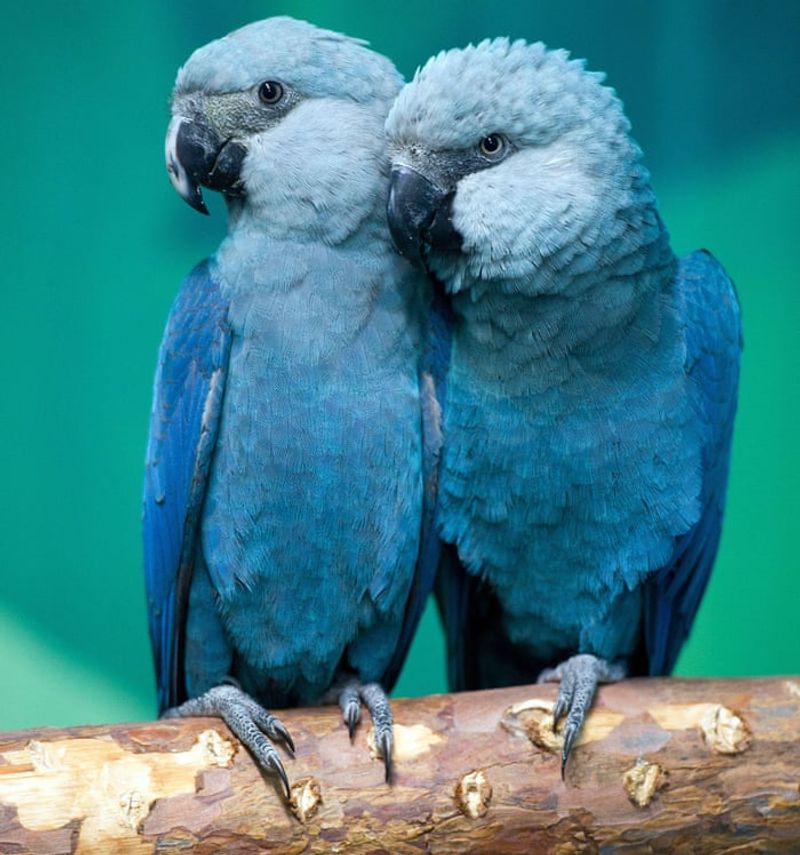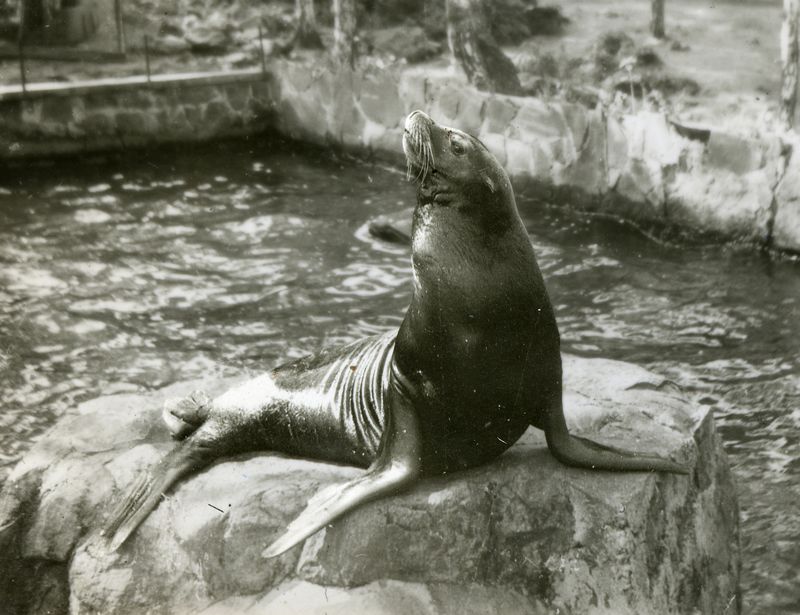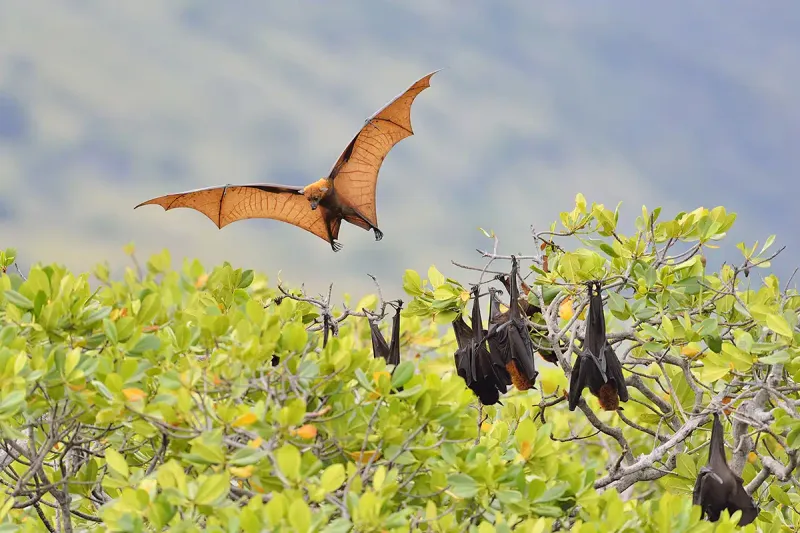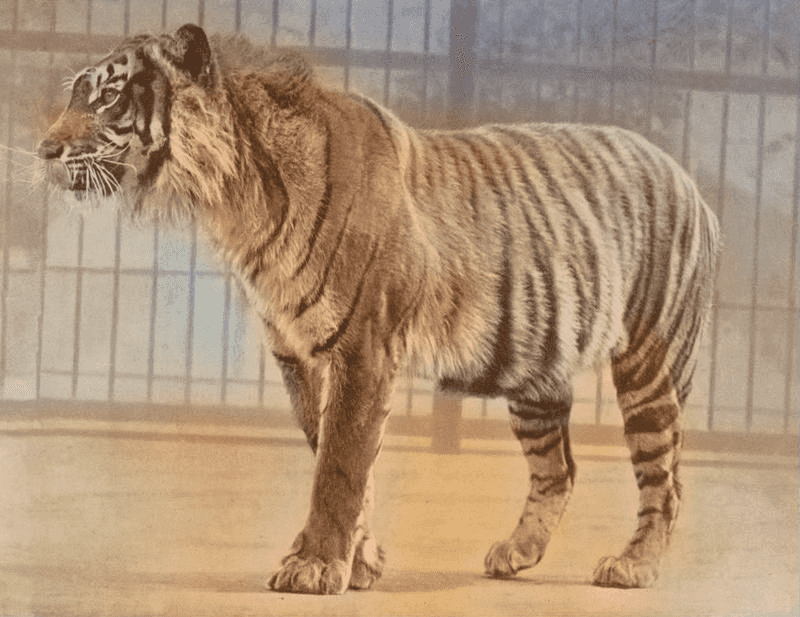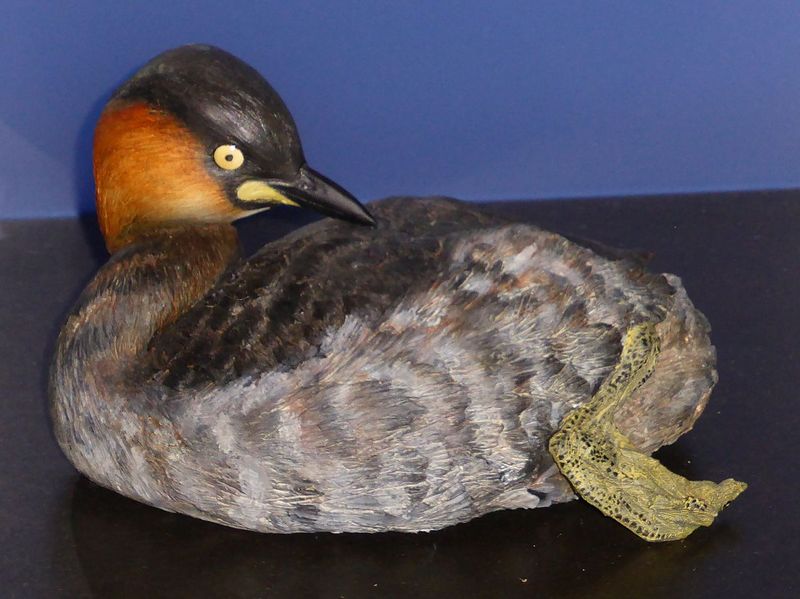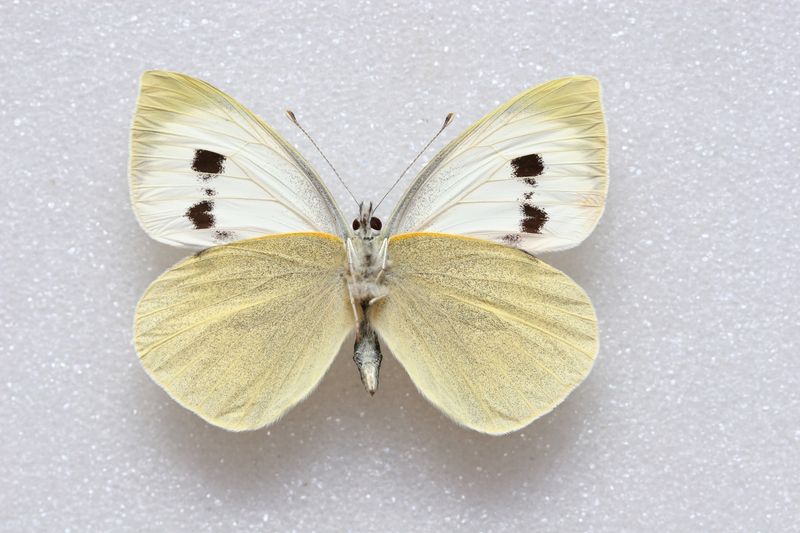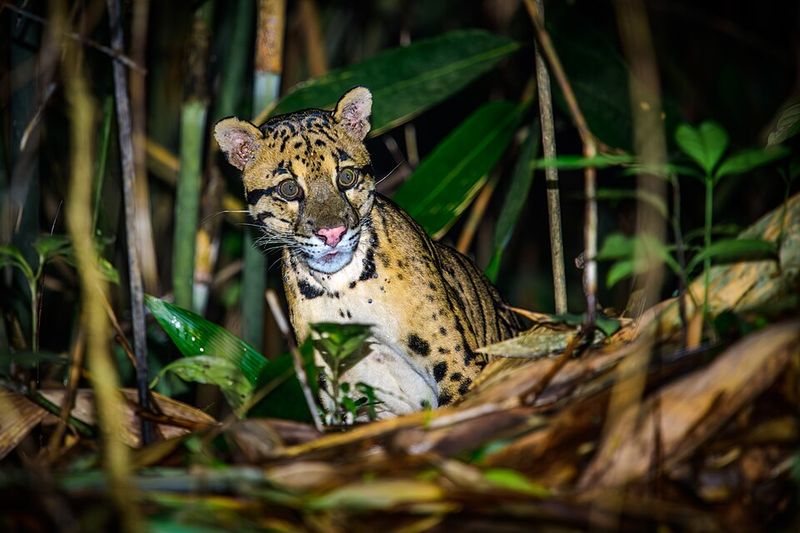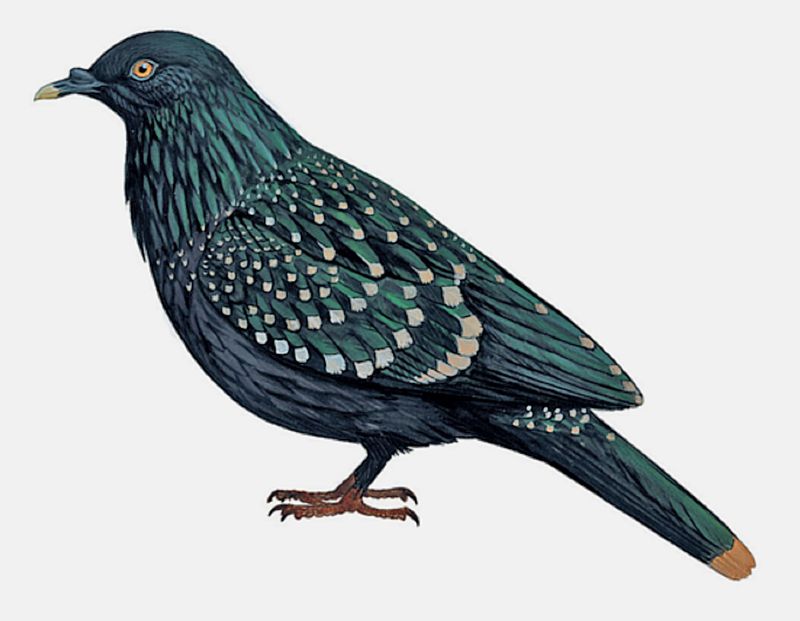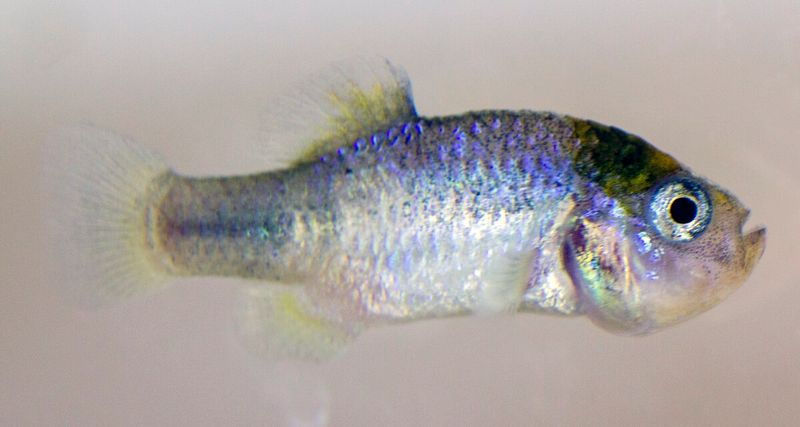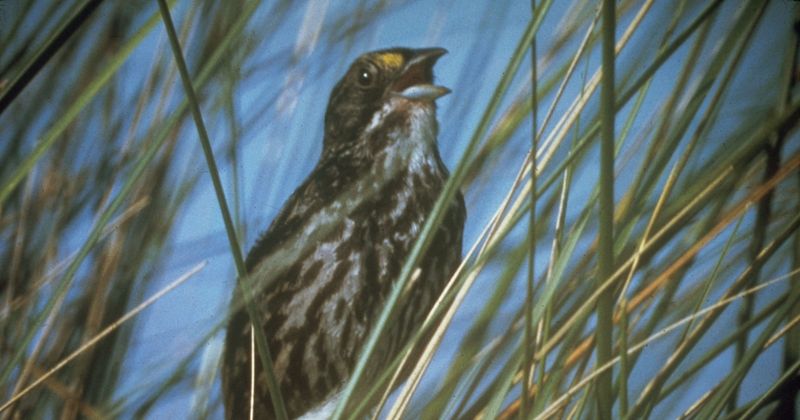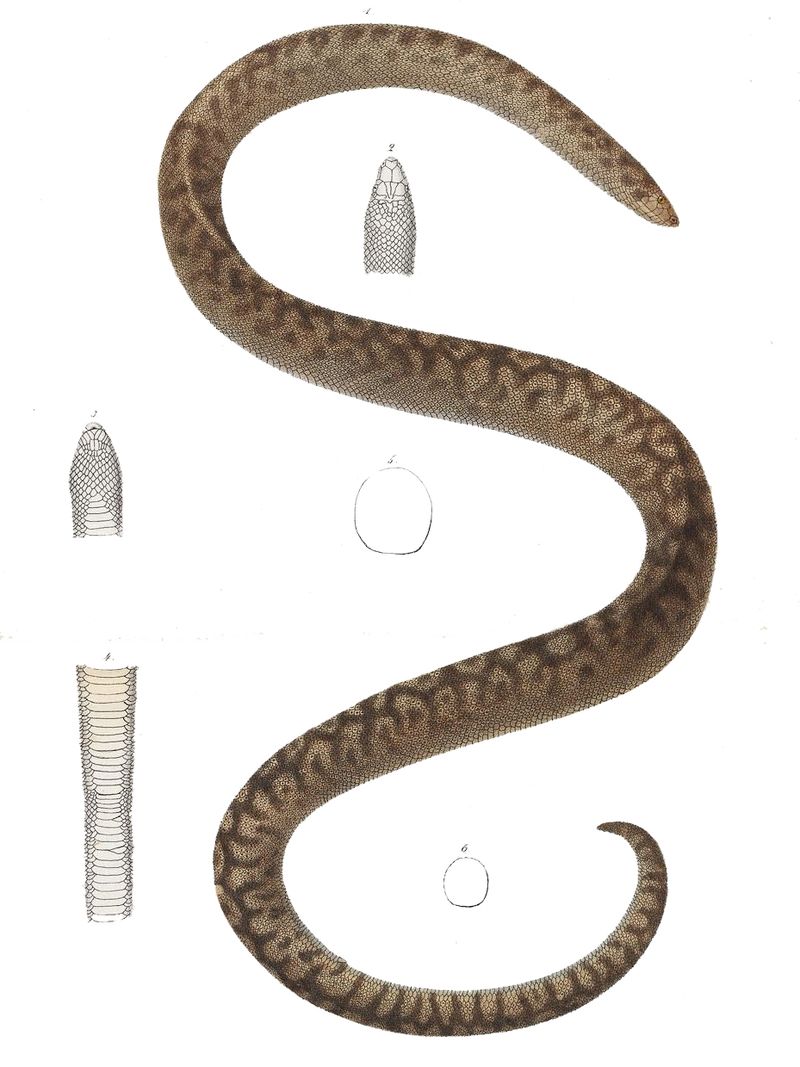Our planet has lost countless species throughout its history, but the rate of extinction has accelerated dramatically since the Industrial Revolution. Human activities like hunting, habitat destruction, and pollution have pushed many creatures to the brink and beyond. The 23 species below represent just a fraction of what we’ve lost since 1875 – each one a unique thread permanently unraveled from Earth’s tapestry of life.
1. Thylacine (Tasmanian Tiger)
Striped and wolf-like, this remarkable marsupial predator vanished from Tasmania’s wilderness in the early 20th century. Farmers and bounty hunters mercilessly targeted thylacines, believing they threatened livestock.
The last known specimen died in Hobart Zoo on September 7, 1936. Black and white footage shows this final thylacine pacing its cage – a ghostly reminder of our destructive power.
Despite occasional reported sightings, no concrete evidence of surviving thylacines exists today.
2. Passenger Pigeon
Once darkening North American skies by the billions, passenger pigeons exemplify humanity’s capacity for ecological devastation. Their massive flocks could stretch for miles, taking days to pass overhead.
Relentless commercial hunting and forest clearing drove these birds to extinction with shocking speed. Market hunters slaughtered them by the thousands, shipping barrels of birds to urban restaurants.
Martha, the last passenger pigeon, died alone at Cincinnati Zoo on September 1, 1914.
3. Quagga
Imagine a zebra that’s only half-striped – that was the quagga. This distinctive African equid had bold stripes on its head and neck that gradually faded to solid brown on its hindquarters and legs.
Dutch settlers in South Africa hunted quaggas relentlessly for their meat and unique hides. They also viewed these animals as competitors for livestock grazing land.
The last captive quagga died at Amsterdam Zoo in 1883, though scientists didn’t recognize its extinction until years later.
4. Caribbean Monk Seal
Sun-loving and curious, these tropical seals once populated beaches throughout the Caribbean. Sailors and explorers encountered them regularly during colonial times, noting their gentle nature and lack of fear toward humans.
This trusting disposition proved fatal. Hunters mercilessly slaughtered Caribbean monk seals for their blubber, which yielded valuable oil for lamps and machinery.
The last confirmed sighting occurred in 1952 near Jamaica. By 2008, scientists officially declared them extinct after extensive searches found no survivors.
5. Pyrenean Ibex
Majestic mountain dwellers with impressive curved horns, Pyrenean ibex once roamed freely across the Spanish-French border. Their agility on steep rocky slopes was legendary among local hunters.
Excessive hunting combined with diseases transmitted from domestic livestock gradually reduced their numbers. Competition with sheep and goats for grazing areas further stressed the remaining population.
Célia, the last Pyrenean ibex, died in 2000 after being crushed by a falling tree. Scientists briefly resurrected the species through cloning in 2003, but the clone survived only minutes.
6. Baiji (Yangtze River Dolphin)
Revered as the “Goddess of the Yangtze,” this pale, long-beaked freshwater dolphin navigated China’s murky river waters using echolocation. Ancient Chinese texts mention the baiji as a river deity deserving protection.
Modern industrial development proved catastrophic. Dam construction, pollution, boat propellers, and illegal fishing practices decimated baiji populations by the late 20th century.
An extensive 2006 expedition found no surviving dolphins. Scientists declared the baiji “functionally extinct,” making it the first dolphin species eliminated by human activities.
7. Western Black Rhino
Powerful yet vulnerable, these magnificent beasts once thundered across Central African savannas. Slightly smaller than other black rhino subspecies, they featured distinctive browsing lips perfect for plucking leaves from thorny bushes.
Poachers targeted them relentlessly for their horns, which fetch astronomical prices in Asian markets for supposed medicinal properties (despite being made of keratin, like human fingernails).
Conservation efforts came too late. After years without confirmed sightings, the IUCN officially declared the Western black rhino extinct in 2011.
8. Pinta Island Tortoise
“Lonesome George” became a conservation icon as the last of his kind. This Galápagos tortoise subspecies evolved in isolation on Pinta Island, developing a unique saddleback shell that allowed it to reach higher vegetation.
Sailors and whalers in the 1800s collected these tortoises as living food supplies on long voyages. Introduced goats later devastated the island’s vegetation, while rats preyed on tortoise eggs.
Despite breeding attempts with related subspecies, George never produced offspring. His 2012 death marked the end of a lineage millions of years old.
9. Bramble Cay Melomys
Small and unassuming, this rodent holds the somber distinction of being the first mammal declared extinct due to human-caused climate change. The mouse-like creature inhabited a tiny coral cay in the Torres Strait between Australia and Papua New Guinea.
Rising sea levels gradually inundated its low-lying island home. Storm surges destroyed vegetation and freshwater sources critical for the melomys’ survival.
After extensive searches found no survivors, Australia officially recognized its extinction in 2016 – a grim harbinger of climate impacts to come.
10. Spix’s Macaw
Electric blue feathers made this small Brazilian parrot one of the world’s most striking birds. Immortalized in the animated film “Rio,” Spix’s macaws specialized in living among caraiba trees in a small region of northeastern Brazil.
Habitat destruction and relentless trapping for the illegal pet trade decimated wild populations. Bird collectors paid enormous sums for these rare macaws, driving a black market that proved impossible to control.
The last wild bird disappeared around 2000. Though approximately 160 survive in captivity, the species is extinct in its natural habitat.
11. Golden Toad
Brilliant orange males seemed almost unreal against the green moss of Costa Rica’s cloud forests. These tiny amphibians emerged for just a few days each year to breed in temporary pools during the rainy season.
Scientists first discovered golden toads in 1964. By 1989, they had vanished completely. Their rapid disappearance shocked the scientific community.
Climate change, fungal disease, and pollution likely combined to eliminate this spectacular species. The golden toad became an early symbol of the global amphibian crisis threatening frogs worldwide.
12. Japanese Sea Lion
Gray-furred and charismatic, these pinnipeds once populated rocky shores throughout the Sea of Japan. Fishermen encountered them regularly, sometimes viewing them as competitors for dwindling fish stocks.
Commercial exploitation proved devastating. Hunters killed Japanese sea lions for their oil, hides, and internal organs used in traditional medicine. Military exercises during World War II further disrupted their breeding colonies.
Despite occasional reported sightings, no confirmed observations exist after 1974. Scientists declared them extinct in 2003 after decades without verifiable evidence of survivors.
13. Toolache Wallaby
Graceful and swift, these elegant marsupials could reportedly outrun greyhounds across the grasslands of southern Australia. Their striking appearance – silver-gray with white stripes – made their pelts highly desirable.
European settlers hunted toolache wallabies relentlessly for sport and fur. Agricultural development simultaneously destroyed their native grassland habitat, replacing it with wheat fields and pastures.
A 1924 attempt to capture breeding pairs for conservation failed when most captured animals died from stress. The last confirmed wild toolache wallaby was spotted in 1939.
14. Guam Flying Fox
Smaller than most fruit bats, these nocturnal creatures played vital roles in pollinating Guam’s native forests. Their wings stretched just 70 centimeters – modest compared to their flying fox relatives elsewhere in the Pacific.
Two human-caused disasters sealed their fate. Locals hunted them extensively for food, considering their meat a delicacy. Then came the brown tree snake, accidentally introduced after World War II.
These invasive predators ravaged Guam’s native wildlife, including the few remaining flying foxes. The last confirmed sighting occurred in 1968, and formal extinction declaration followed in 1984.
15. Javan Tiger
Smaller and darker than their mainland cousins, these jungle cats prowled Indonesia’s most densely populated island. Their shorter fur featured unusually long, thin stripes perfectly adapted for camouflage in Java’s thick forests.
Human development proved catastrophic for these magnificent predators. As Java’s human population exploded, tiger habitat shrank dramatically. Villagers hunted them as threats to safety, while poachers sought their valuable parts for traditional medicine.
Despite protected status, the last confirmed track was found in 1976. By 1994, scientists declared the Javan tiger extinct.
16. Alaotra Grebe
Specialized for life on Madagascar’s largest lake, these diving birds couldn’t fly but excelled at underwater fishing. Their rusty-brown plumage and yellow eyes made them distinctive among local waterbirds.
Lake Alaotra’s ecosystem collapsed under multiple pressures. Invasive carnivorous fish devoured grebe chicks, while fishermen accidentally drowned adults in gill nets.
Habitat destruction through sedimentation and pollution further stressed the population. Despite conservation concerns, the birds received little protection. The last confirmed sighting occurred in 1985, with extinction officially declared in 2010.
17. Madeiran Large White Butterfly
Fluttering through Portugal’s Madeira archipelago, these butterflies sported distinctive white wings with black spots. Unlike their mainland relatives, Madeiran subspecies evolved unique characteristics suited to island life.
Their caterpillars specialized in eating native crucifers found in the island’s laurel forests. As agriculture expanded, these forests shrank dramatically, eliminating critical butterfly habitat.
Pesticide use dealt the final blow. Chemicals targeting agricultural pests also killed butterfly larvae. The last confirmed sighting occurred in 1977, with extinction officially recognized thirty years later.
18. Formosan Clouded Leopard
Ghost cats of Taiwan’s misty mountains, these elusive predators featured spectacular cloud-like markings on their golden fur. Indigenous Rukai and Paiwan tribes revered them as sacred, considering clouded leopard teeth symbols of nobility and courage.
Logging operations shattered their forest habitat throughout the 20th century. Poachers simultaneously targeted them for their beautiful pelts, which fetched high prices in illegal wildlife markets.
Despite their cultural significance, the last confirmed sighting occurred in 1983. After an extensive 13-year camera trap survey found no evidence of survivors, scientists declared them extinct in 2013.
19. Christmas Island Pipistrelle
Barely larger than a human thumb, these tiny bats zipped through Christmas Island’s forests catching insects. Their echolocation calls were so high-pitched that special equipment was needed to detect them.
Scientists noticed their rapid decline in the early 2000s but couldn’t pinpoint a single cause. Invasive wolf snakes, yellow crazy ants, disease, and habitat changes likely combined to push them over the edge.
A 2009 emergency expedition to capture remaining bats for a breeding program came too late – they found none. This marked one of the fastest documented extinctions of a mammal species.
20. Liverpool Pigeon
Shrouded in mystery, this striking bird is known from just a single specimen housed in Liverpool’s World Museum. Its spotted plumage suggests a relationship to the Nicobar pigeon, though its exact origin remains uncertain.
Scientists believe it likely inhabited remote Pacific islands, where many unique pigeon species evolved in isolation. These island ecosystems proved catastrophically vulnerable to human arrival.
Hunting and introduced predators like rats probably caused its extinction. The specimen was collected before 1851, making it one of the earliest documented bird extinctions in the modern era.
21. Catarina Pupfish
Adapted to life in a single Mexican spring, these small freshwater fish displayed remarkable evolutionary specialization. Males flashed brilliant blue breeding colors to attract mates in their limited habitat.
Agricultural development in northern Mexico proved devastating. Groundwater pumping for irrigation gradually lowered the water table, causing their spring habitat to shrink dramatically.
Pollution from nearby farms further degraded water quality. Despite conservation breeding efforts, the last captive pupfish died in 2012. This extinction highlights the vulnerability of species restricted to single locations.
22. Dusky Seaside Sparrow
Salt marshes along Florida’s Atlantic coast once echoed with the distinctive songs of these dark-feathered birds. Their specialized diet and nesting habits were perfectly adapted to the rhythms of coastal wetlands.
Human development transformed their habitat beyond recognition. NASA’s Kennedy Space Center construction destroyed prime marshland, while DDT pesticide use poisoned their food supply.
Conservation efforts came too late. The last known individual, a male nicknamed “Orange Band,” died in captivity at Disney’s Discovery Island in 1987. His preserved body now resides in a museum – a reminder of what we’ve lost.
23. Round Island Burrowing Boa
Unique among snakes, this remarkable reptile evolved specialized scales for digging through volcanic soil on its tiny island home near Mauritius. Its cylindrical body and blunt head were perfect adaptations for a burrowing lifestyle.
Human-introduced goats and rabbits devastated the island’s native vegetation, triggering catastrophic erosion. As plants disappeared, so did the snake’s invertebrate prey and the soil needed for burrowing.
The last confirmed sighting occurred in 1975. By 1996, scientists officially declared it extinct – another island species lost to invasive species and habitat destruction.
